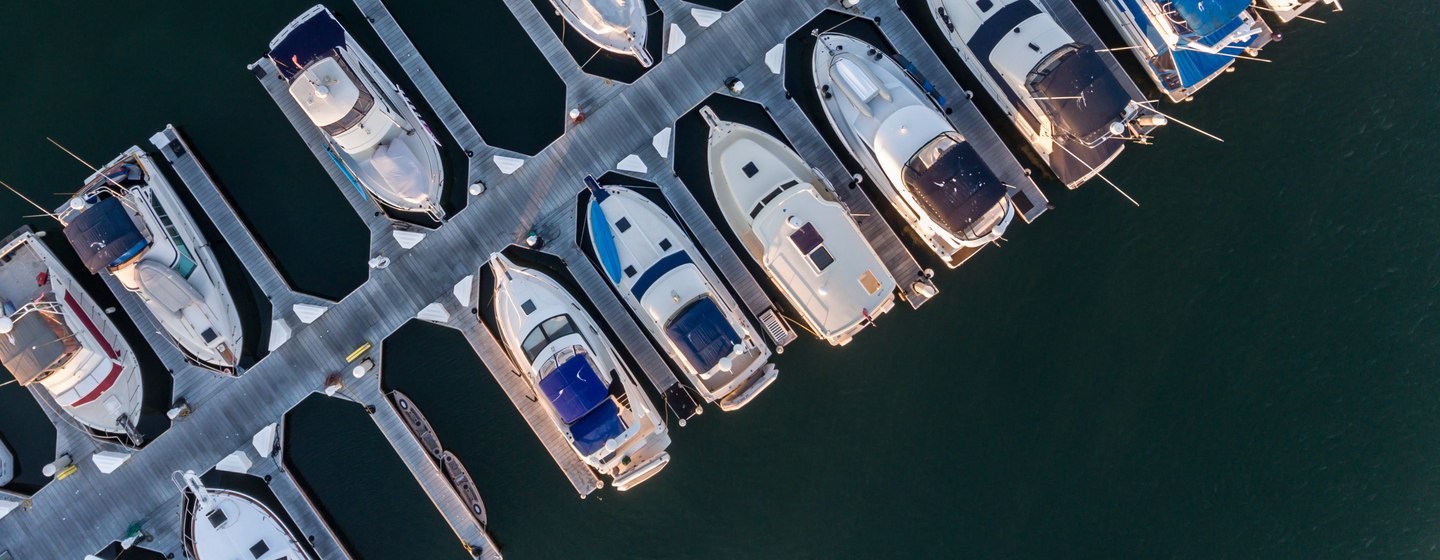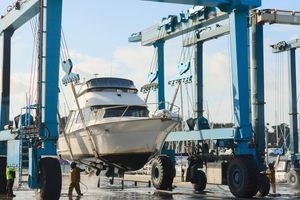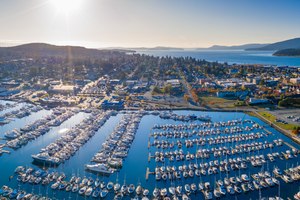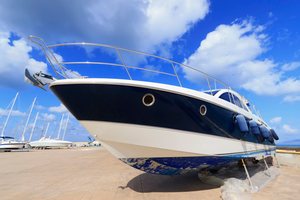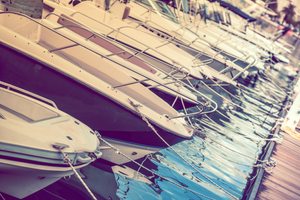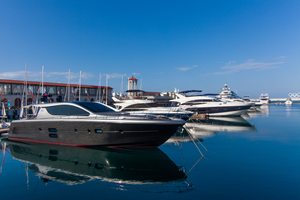Boat buying can sometimes feel like learning a new language to understand what brokers and sellers are saying. This quick and easy guide breaks down key specifications into clear, manageable pieces.
If you're asking, “What boat specs should I look for as a first-time buyer?” or “How do I understand boat size, engine power, and hull type?” — you're not alone. Whether you’re shopping for a weekend cruiser, a small fishing boat, or your first family-friendly runabout, understanding boat specifications is key to making a smart, confident purchase.
This beginner-friendly guide explains the most important boat specs — from length and beam to draft, fuel capacity, horsepower, and hull types — in plain English. We'll walk you through what matters, what’s negotiable, and how to compare boats like a seasoned buyer, even if it’s your very first one. Here's what to expect, in a nutshell:
| Specification | Description | Why It Matters |
|---|---|---|
| Length Overall (LOA) | Total length of the boat from bow to stern | Affects marina fees, storage, and interior space |
| Beam | The width of the boat at its widest point | Impacts stability and cabin space |
| Draft | Depth of the boat below the waterline | Important for shallow water access and trailering |
| Freeboard | Height from waterline to deck level | Higher freeboard offers better dryness and safety |
What Is a Hull in Yachts? Common Types of Boat Hulls Explained
A hull is the main structural component of the boat that sits in the water. It provides buoyancy and stability, supporting the entire weight of the boat. The hull's shape and design affect the boat's performance, including speed, handling, and seaworthiness.
Understanding different hull types is essential when choosing the right boat. Each hull design affects stability, performance, fuel efficiency, and suitability for various water conditions. Here's a breakdown of the most common types:
Monohull
- Description: A boat with a single hull — the most traditional and widely used type for both motorboats and sailboats.
- Strengths: Offers strong handling, excellent performance under power or sail, and tends to slice through waves for a smoother ride in choppy water.
- Use Case: Versatile for offshore cruising, day boating, and sailing.
Multihull: Catamaran
- Description: Features two parallel hulls connected by a deck.
- Strengths: Increased stability, large deck area, shallow draft, and minimal roll at anchor.
- Use Case: Great for liveaboards, family cruising, and coastal waters where comfort and space are priorities.
Multihull: Trimaran
- Description: Built with three hulls — a central main hull and two smaller outrigger hulls.
- Strengths: Superior speed and stability, especially in sailing trimarans; efficient fuel use and wave-piercing abilities.
- Use Case: Ideal for long-distance cruising, high-performance sailing, and racing.
Flat-Bottom Hull
- Description: A completely flat surface on the bottom of the boat.
- Strengths: Very stable in calm, shallow water and easy to beach or trailer; offers maximum deck space.
- Limitations: Rough ride in waves; poor performance in chop.
- Use Case: Best for lakes, rivers, and shallow water fishing or workboats.
V-Bottom Hull
- Description: Shaped like a "V" from bow to stern, with varying degrees of deadrise (angle).
- Strengths: Offers a smooth ride in rougher waters, good speed, and better maneuverability.
- Use Case: Popular with offshore fishing boats, sportboats, and cruisers.
Round-Bottom Hull
- Description: Rounded underside, often found on traditional sailboats and trawlers.
- Strengths: Efficient at lower speeds, excellent for displacement hulls, and performs well in long-distance cruising.
- Limitations: Tends to roll side to side in waves without stabilizers.
- Use Case: Ideal for long-range cruisers, yachts, and displacement hull designs.
Hull Types and Their Performance Traits
| Hull Type | Ride Characteristics | Best For |
|---|---|---|
| Flat-Bottom Hull | Stable in calm water, rough ride in chop | Lakes, rivers, and shallow areas |
| V-Bottom Hull | Smooth ride, good for rougher conditions | Offshore cruising, versatile performance |
| Catamaran Hull | Very stable, wide beam, fuel-efficient | Fishing, family outings, coastal cruising |
| Round-Bottom Hull | Efficient at low speeds, more roll in waves | Displacement boats and trawlers |
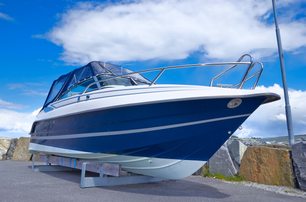
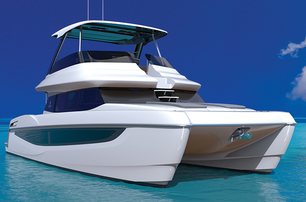
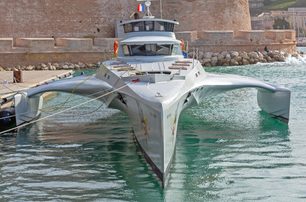
What Is a Yacht Length?
In boating, LOA (Length Overall) and LWL (Length Waterline) are two different measurements used to describe a boat's size and performance characteristics.
- LOA (Length Overall): This is the total length of the boat from the tip of the bow to the end of the stern, including all overhangs. It provides the maximum length of the vessel as seen from the outside.
- LWL (Length Waterline): This measures the length of the boat at the waterline. It does not include any overhangs beyond the point where the boat sits in the water. LWL is important for understanding a boat’s speed potential and handling characteristics, as it affects water resistance and hull performance.
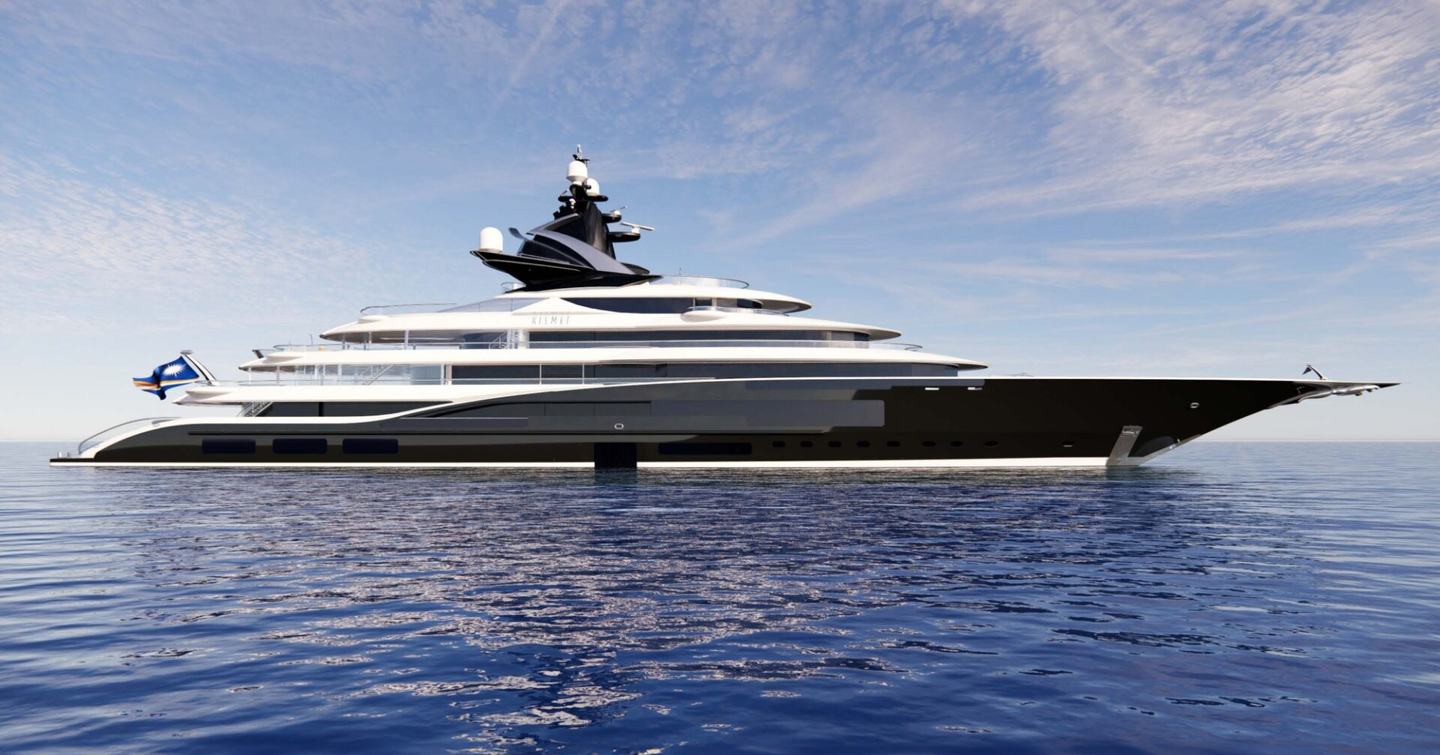
As an example, the 2014 Lurssen yacht WHISPER (formerly known as KISMET) has a waterline length (LWL) of 75.5m/247.8ft. However, its length overall (LOA) is 95.2m/312.4ft, a difference of 19.7m/64.6ft. This difference is due to the yacht's prominent bow feature
Be aware that boat model names can sometimes give the impression of a length that doesn't match the actual measurement. Some builders use meters, while others use feet in their model titles. For example, the now-discontinued Sea Ray 420 Sundancer suggests 42ft but it measures 45ft. Similarly, the Custom Line Navetta 30 may imply 30m or 30ft. In this case, it was in meters, however, it measures 28.43m
What Is a Beam in a Yacht?
The beam is the width of the boat at its widest point, measured perpendicular to its length.
A wider beam provides more stability and interior space but can affect the boat's ability to navigate narrow channels and maneuvering ability, while a narrower beam can enhance speed and maneuverability.
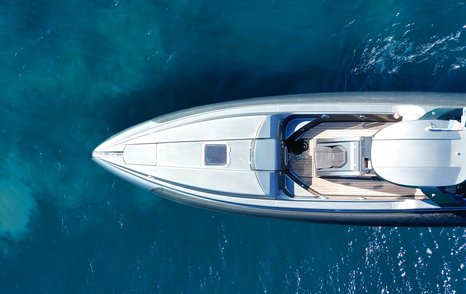
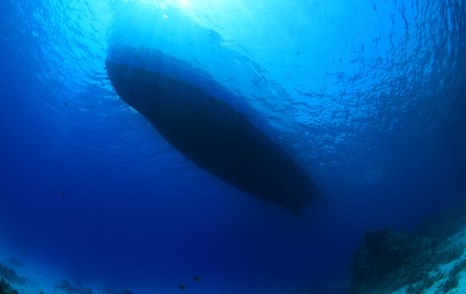
First-time boat buyers should consider the beam relative to the type of activities of the boat, and the water conditions or the berthing opportunities of the cruising, or activity, area.
What Is a Draft in a Boat?
Draft refers to the depth of a boat's hull below the waterline.
A shallow draft enables access to shallower waters and closer beach landings, making it suitable for exploring coastal areas and navigating narrow channels.
Conversely, a deeper draft enhances stability and performance in rough seas, offering better control and reducing the risk of instability.
First-time buyers should consider factors such as the depth of a planned marina berth, the tidal sill at a local harbor, and preferred anchorage spots to ensure the boat's draft aligns with their planned activities and locations.
For a more detailed look at the draft and considerations of boat buying, the YachtBuyer Guides and Advice provides a full article in What is Draft and Why Does it Matter?
What is Air Draft on a Yacht?
Air draft refers to the height of a boat from the waterline to the highest point on the boat. It's an important measurement because it determines whether your boat can pass under bridges, power lines, or other overhead obstacles.
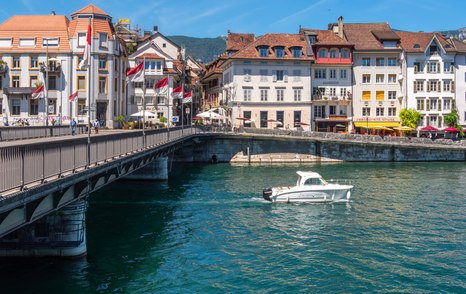

If you're considering buying a boat, knowing its air draft is important, especially if you plan to navigate rivers, canals, or areas with low-clearance bridges. Boats with a high air draft might face limitations in certain waterways, so it's a key factor to consider based on where you plan to cruise.
What Is a Displacement on a Yacht?
Displacement measures the boat's weight and affects its stability and performance. Heavier boats generally provide a smoother ride and better stability, while lighter boats may offer faster speeds and better fuel efficiency.
Light Displacement
- Characteristics: Lighter boats that are faster and more agile.
- Performance: Excels in calm conditions with quick acceleration and easy handling.
- Usage: Ideal for racing, recreational activities, and cruising in calm waters.
Moderate Displacement
- Characteristics: Balanced weight, offering both speed and stability.
- Performance: Handles various conditions well, providing a comfortable and versatile ride.
- Usage: Suitable for general cruising in diverse water conditions.
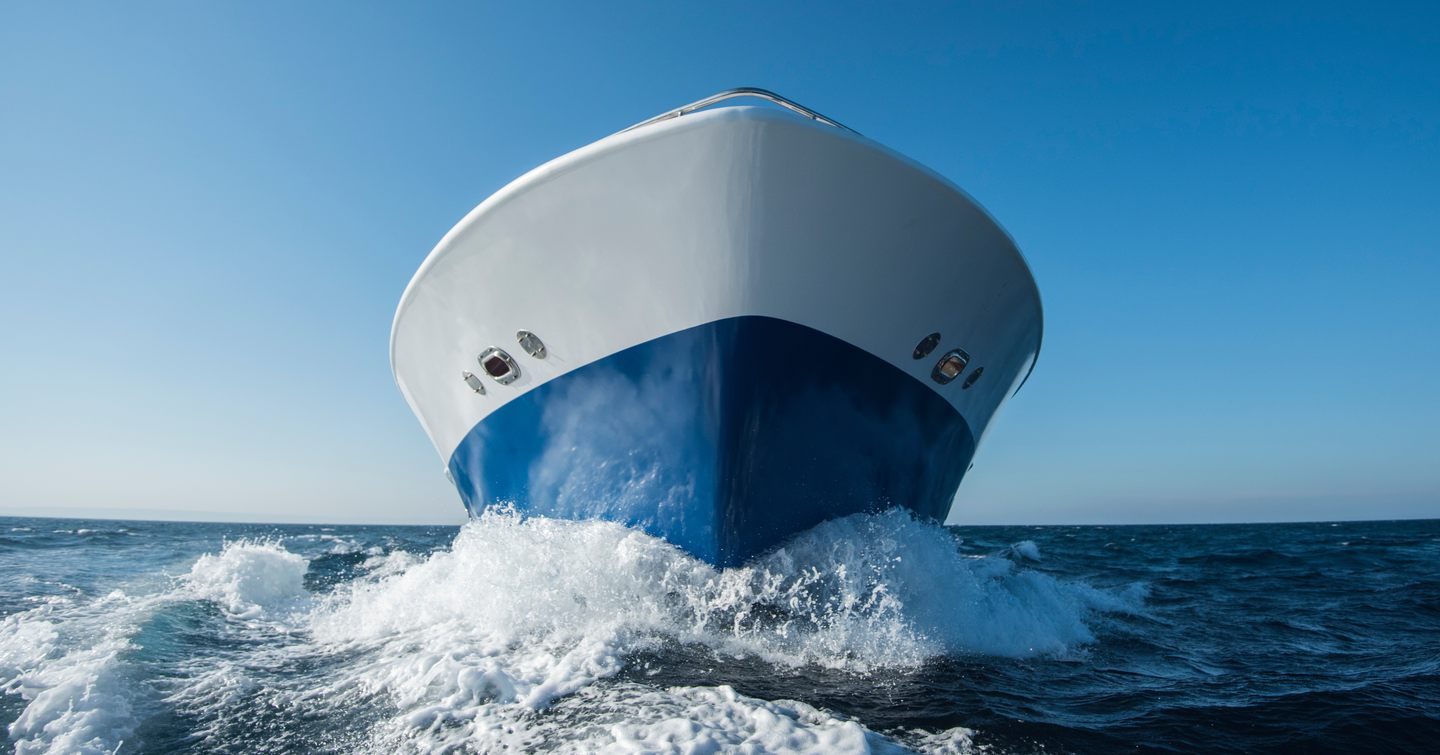
Heavy Displacement
- Characteristics: Heavier boats with increased stability in rough seas.
- Performance: Offers a smooth ride and better stability, though slower and less agile.
- Usage: Best for long-distance and offshore cruising where stability is crucial.
How Important Is Yacht Tonnage?
Gross Tonnage (GT) and Net Tonnage (NT) are important terms in the boating world, especially when you're considering buying a boat for the first time. Here's a clear explanation:
Gross Tonnage (GT) is a measure of the total internal volume of a boat. It takes into account the overall size of the boat, including the spaces used for machinery, for example, the engine bay. It's not related to the weight of the boat but rather the amount of space inside it. A higher gross tonnage indicates a larger boat with more interior space, which can often mean more amenities and comfort.
Net Tonnage (NT), on the other hand, is a measure of the usable space within the boat. This excludes areas like the engine room, crew spaces, and storage. Essentially, it represents the volume available for guests onboard (or cargo if a commercial vessel).
In summary, gross tonnage gives you an idea of the overall size and capacity of the boat, while net tonnage focuses on the space that's available for use.
Yacht Engine Type
Let's explore the option of outboard and inboard.
Outboard Engines
Mounted on the boat’s transom (rear), these engines are external and easy to see.
Benefits:
- Ease of Maintenance: Simple to service and replace.
- More Space: Since they’re outside the hull, you get more room inside the boat.
- Versatility: Ideal for smaller boats, they can be tilted up to navigate shallow waters.
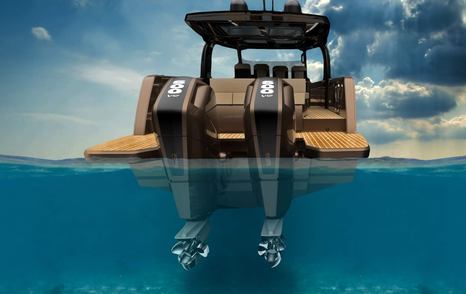
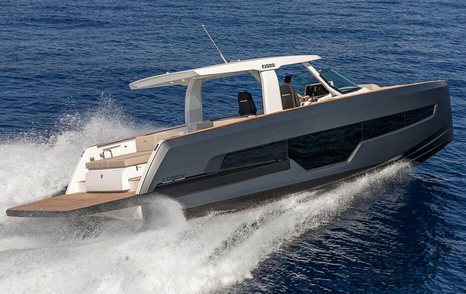
Inboard Engines
Installed inside the boat’s hull, typically in the center or at the stern.
Benefits:
- Better Handling: Offers improved balance and smoother handling, especially in rough waters.
- Quieter Operation: Being inside the hull, they produce less noise.
- Cleaner Look: With no engine hanging off the back, the boat has a sleeker appearance.
For example, the boat builder Fjord provides the option of either outboard or inboard with a number of their ranges. Shown above, are the Fjord 41XL (inboard) and 41XP (outboard).
Engine and Fuel Specifications
| Engine Spec | Typical Range | Best For |
|---|---|---|
| Horsepower (HP) | 25 – 600 HP | Speed, towing power, and acceleration |
| Fuel Type | Gasoline or Diesel | Gas for smaller boats, diesel for long-range & economy |
| Fuel Capacity | 20 – 300+ gallons | Determines cruising range and trip planning |
| Top Speed | 15 – 60+ knots | Depends on engine size and hull design |
We hope our guide made the yachting world even more exciting - now it's time to go ahead and view all new and used fast yachts for sale, tracked in real-time by YachtBuyer. We scan the entire market to ensure access to all genuine listings, saving you time. Alternatively, you can view used yachts for sale and embark on your dream journey more quickly.
